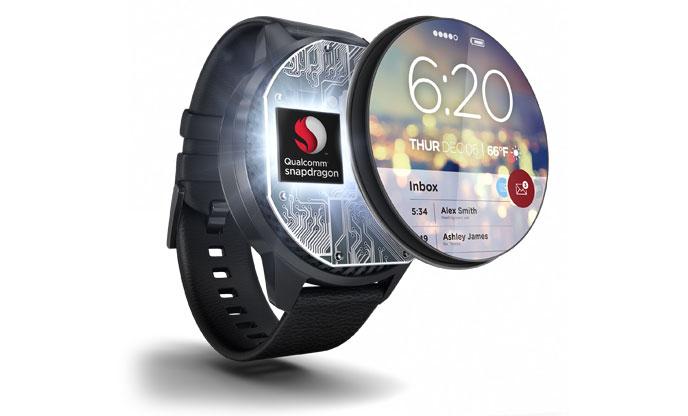Affiliate links on Android Authority may earn us a commission. Learn more.
Qualcomm releases Snapdragon Wear 2100 to enhance the wearable experience

The two key features of the Snapdragon 2100 are its reduction in size and an increase in power efficiency. According to Qualcomm the Snapdragon Wear 2100 is 30 percent smaller than the Snapdragon 400, which should help OEMs build thinner and sleeker devices. It also uses less power, 25% less according to Qualcomm. If there is one huge problem with wearables at the moment it is battery life, so any progress in making the battery last longer is very welcome!
Qualcomm is also keen to point out that the Snapdragon Wear 2100 has an integrated, ultra-low power sensor hub, which will allow for the use of more sophisticated algorithms and greater accuracy than the Snapdragon 400.
LG will be releasing new smartwatches and other wearable devices that use the Wear 2100 later this year.
Like some variants of the Snapdragon 400, the Snapdragon Wear 2100 uses four Cortex-A7 cores running at a max clock speed of 1.2 GHz. There is a Adreno 304 GPU which support OpenGL ES 3.0. The choice of GPU is interesting as ARM recently released the Mali 470, which only supports OpenGL ES 2.0, the logic being that smartphones don’t need OpenGL ES 3.0 and the implementing 2.0 needs less space and is more power efficient. However, Qualcomm exclusively uses its own GPUs in its chips, so the 304 is probably the lowest GPU in it current portfolio.
In terms of connectivity the Wear 2100 is available in both wirelessly tethered (Bluetooth and Wi-Fi) and connected (4G/LTE and 3G) versions with the latter supporting LTE FDD & TDD, WCDMA, TD-SCDMA, EV-DO & CDMA 1x, and 2G GSM/EDGE.
Earlier this year, Qualcomm announced that its technologies are used in 65 wearable devices across 30 countries.
Interestingly, because the Snapdragon Wear 2100 supports normal Android as well as Android Wear, it could start to appear in some low-end smartphones as well! However its intended market is smartwatches, kid and elderly watches, smart bands, smart eyewear and smart headsets.
Overall this is a good move by Qualcomm. It has established an early lead as the de-facto processor supplier for wearables and consolidating this position will be important for Qualcomm’s long term growth into new sectors. Earlier this year, Qualcomm announced that its technologies are used in 65 wearable devices across 30 countries. It also said that at least 50 more wearable devices will launch this year with Qualcomm tech inside.
What do you think, will this new processor make wearables sleeker with longer battery lives?